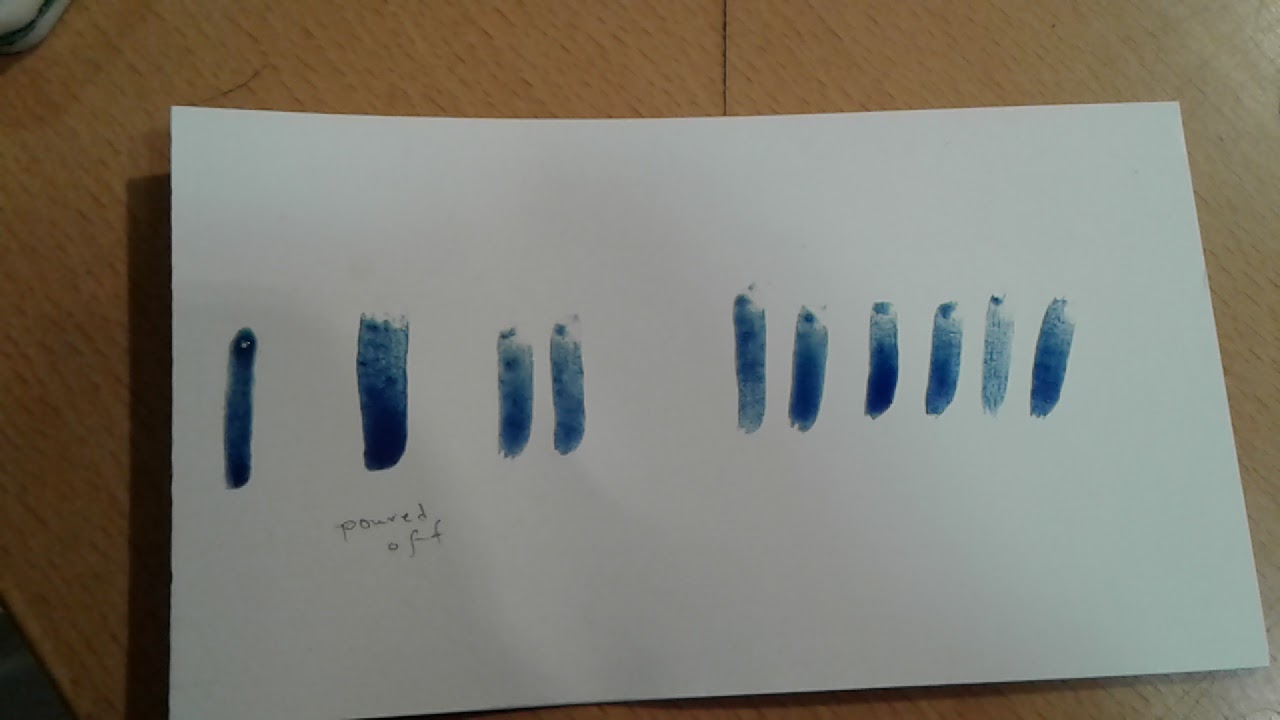June 5, 2017
Azurite crushing and washing session
Led by Spike Bucklow, Fitzwilliam studio room, Cambridge University
Workshop organized by the Ingenuity Project (Alex Marr) with the Making Visible Project (Sachiko Kusukawa) and the curatorial team of the Fitzwilliam Museum’s “Madonnas and Miracles” exhibit (March - June 2017)
Participants:
- ERC group “Ingenuity” (Alex Marr, Richard, Raf, Jose)
- “Making Visible Project” (Sachiko Kusukawa, Katie, Seitske)
- “Madonnas and Miracles” exhibition team at the Fitzwilliam Museum (Maya, Irena)
- “Making and Knowing Project (Pamela, Tianna, Naomi)
Notes by NJR (Naomi Rosenkranz)
- Flickr album of> Azurite_NJR
- V&A/RCA blog post on Azurite May 2017 part> 1
- V&A/RCA blog post on Azurite May 2017 part> 2
Handouts:
- CAMEO Characteristics of Common Blue> Pigments
- Cennini on Azurite prep
Spike Bucklow presentation:
- Experimental knowledge is transmitted through 1) demonstration, 2) observation, and 3) participation
- Azurite sourcing:
- Spike has purchased a chunk of azurite ore about the size of 1-2 golf balls
- Found it on the internet somewhere; not from Kremer; probably mined somewhere in Africa
- Can tell it is legitimate from appearance, inclusion of malachite and other impurities, as well as handling properties
- Azurite properties
- No color in particles smaller than 1/1000 mm (= 1 micron = 1 x 10^-6)
- “Good” pigment is glittery midnight blue. The more, the better
- By levigation of azurite in water, we separate by particle size. We wash away smaller particles, leaving the larger most vivid in color particles
Process:
- Crush azurite ore with mortar and pestle
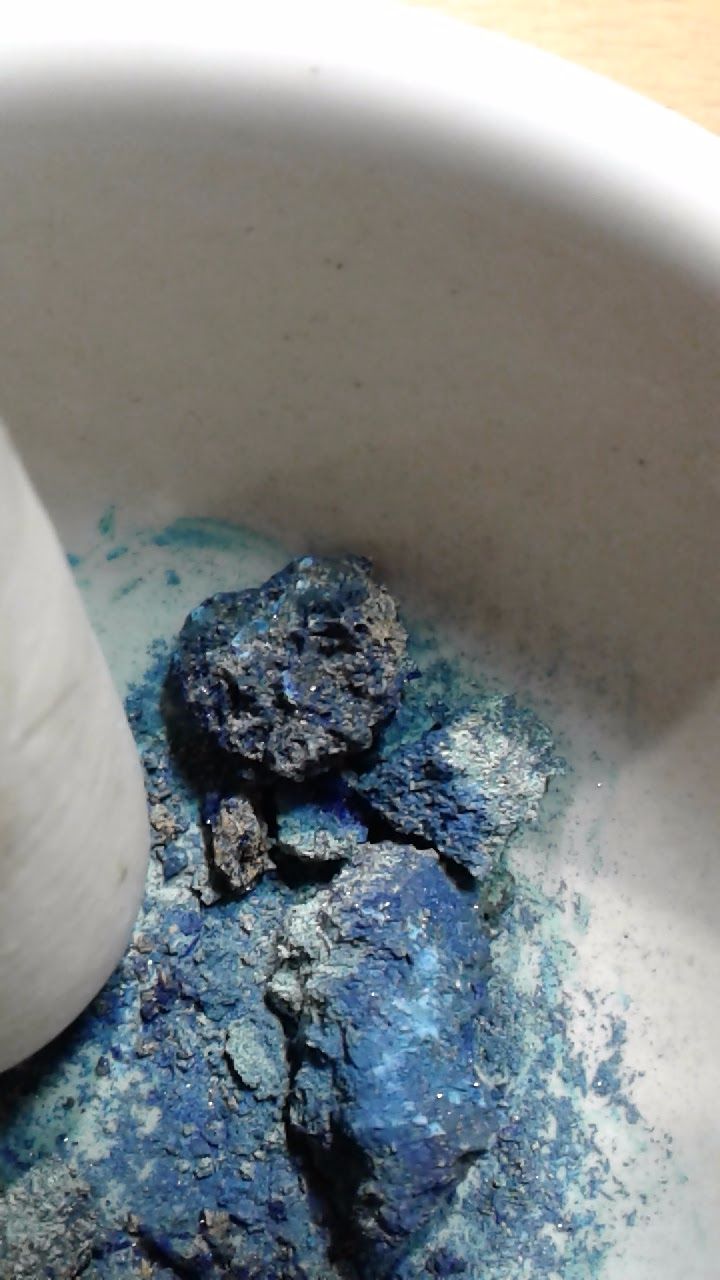
- When small-ish, transfer to glass plate + muller
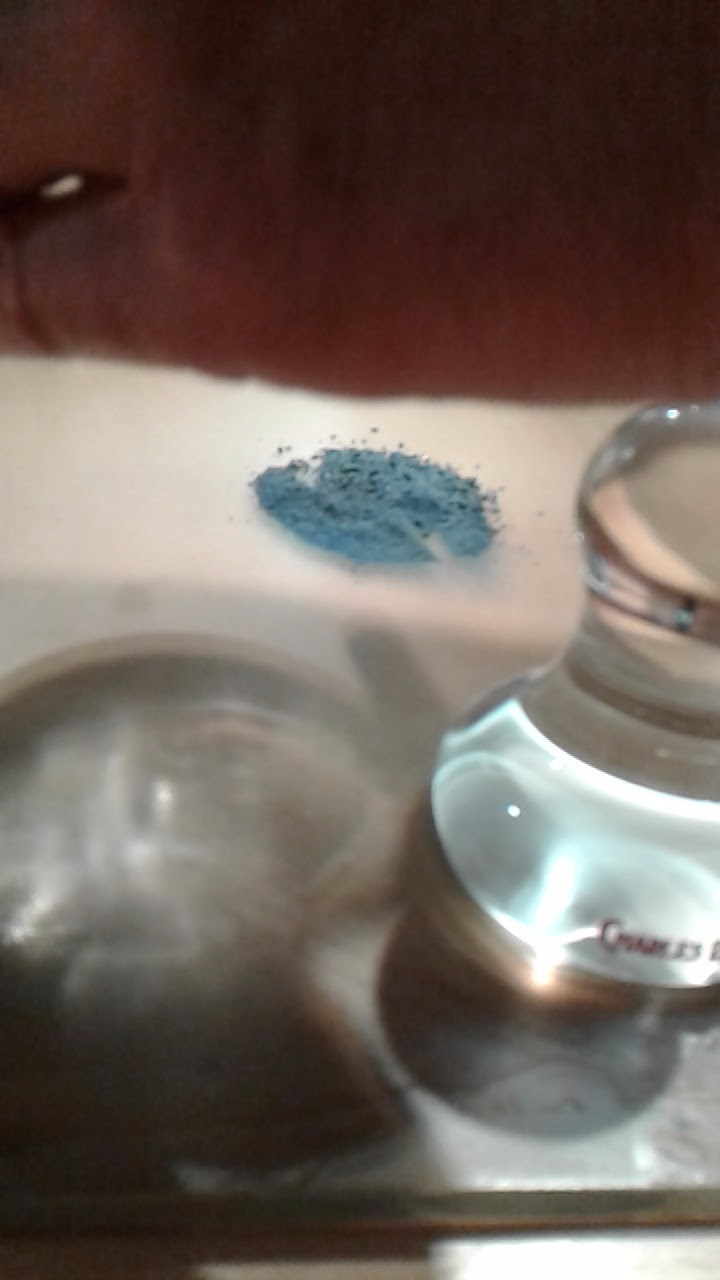
- Add some water and do rough mulling before moving to concentric mulling
- Observation: as it dried out, got tacky + difficult to mull smoothly/homogeneously
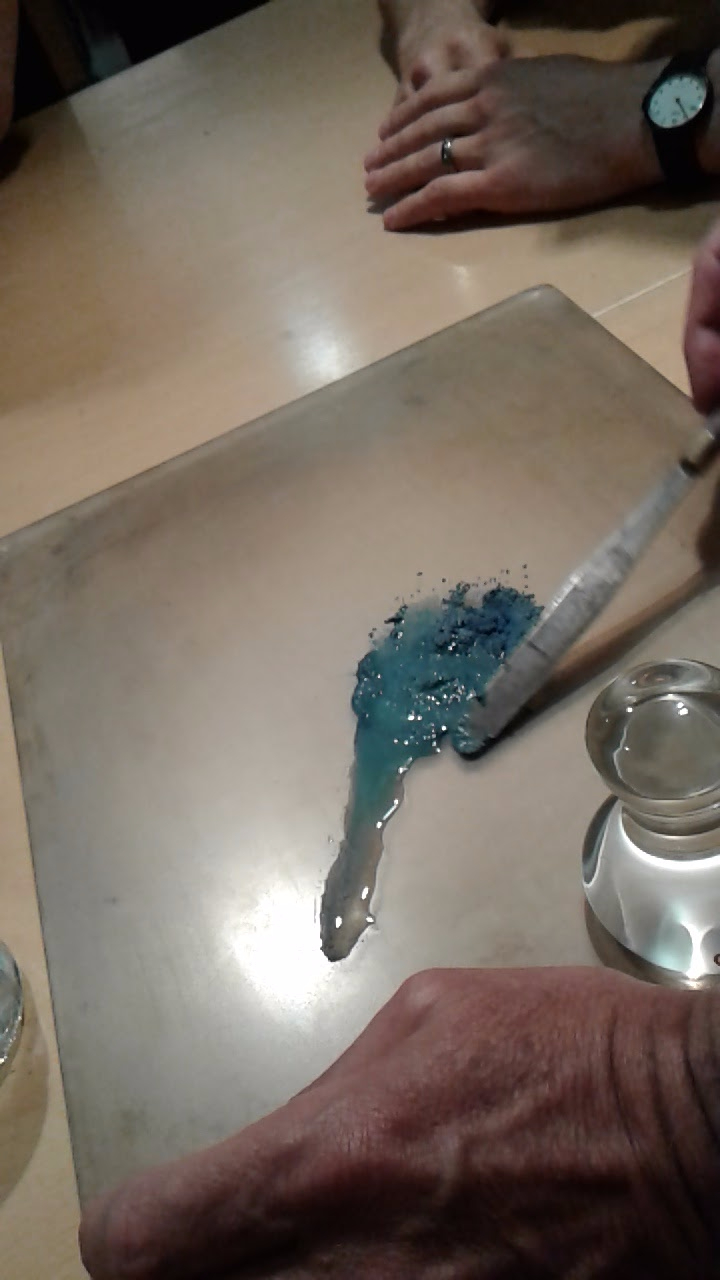
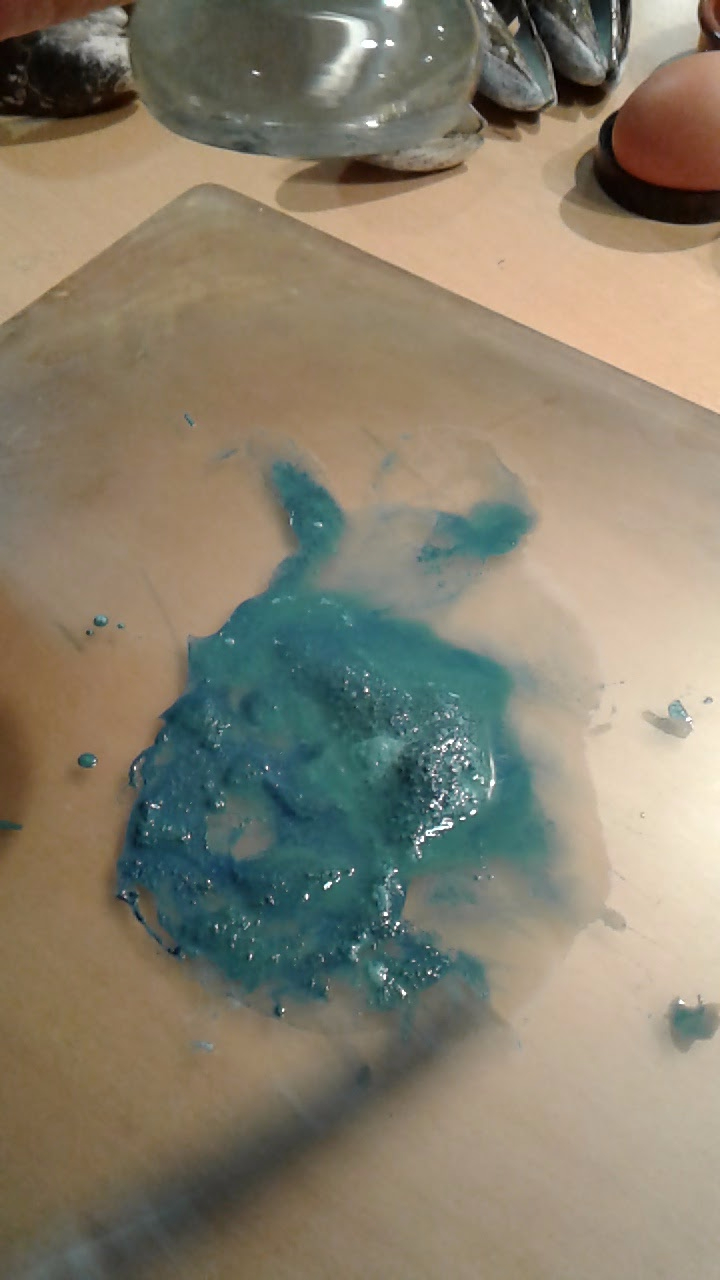
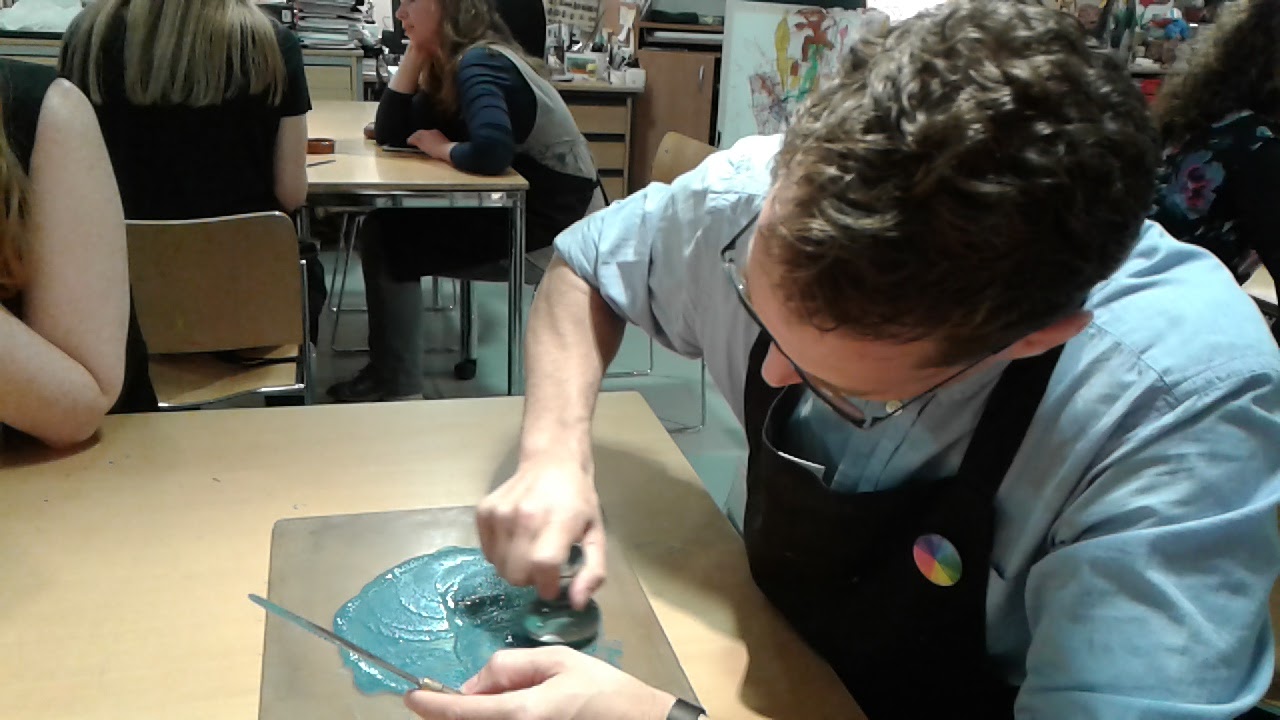
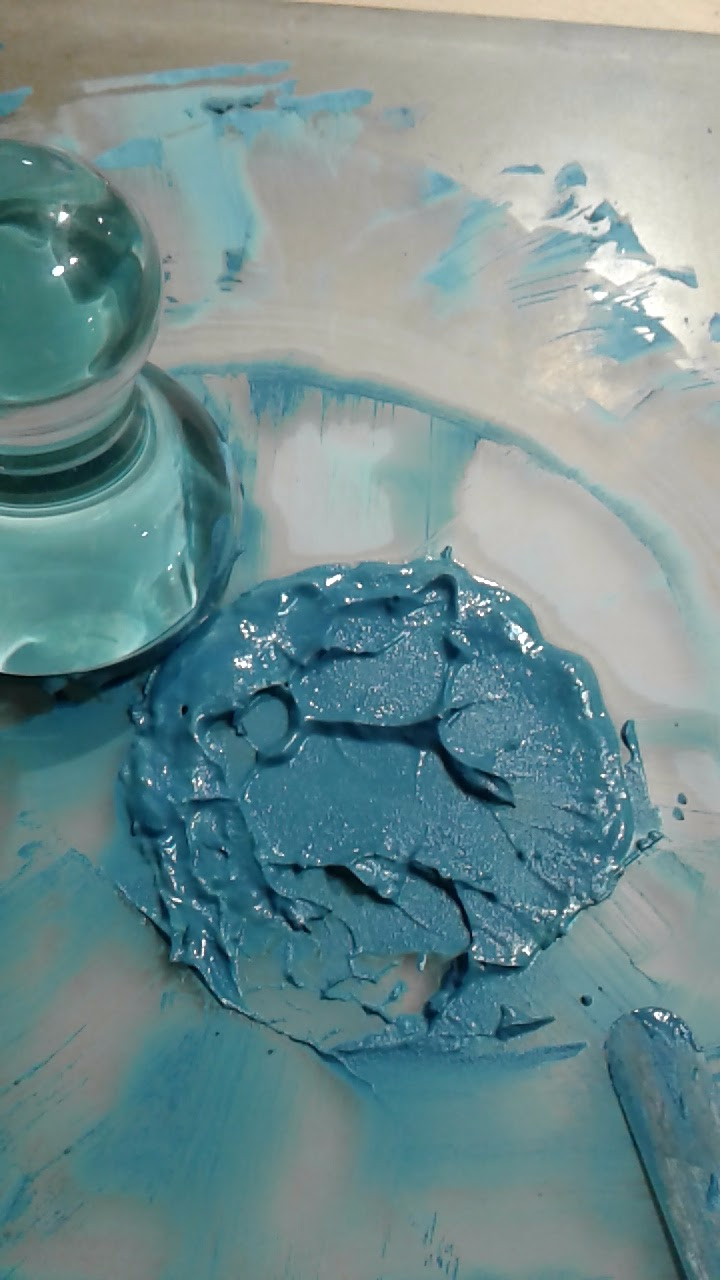
- Transfer small amount (about as much as could fit on one finger) to mussel shell
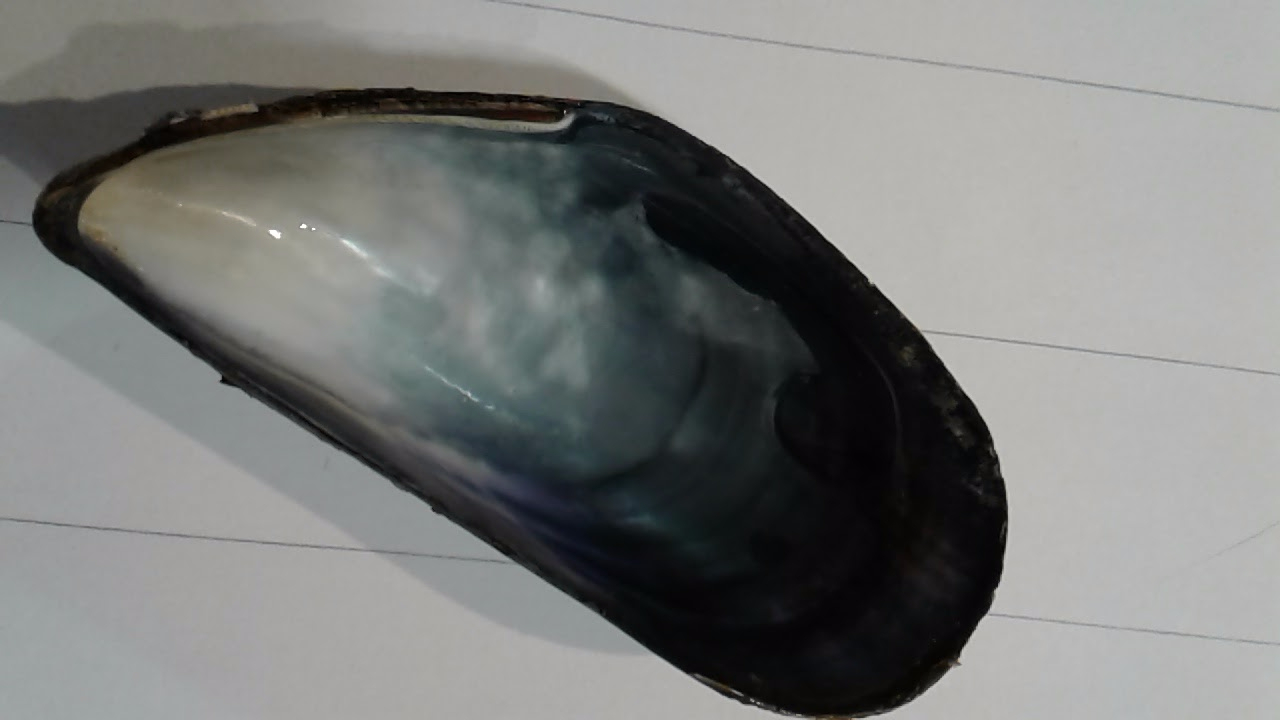

- Add water and swish with finger, then swirl
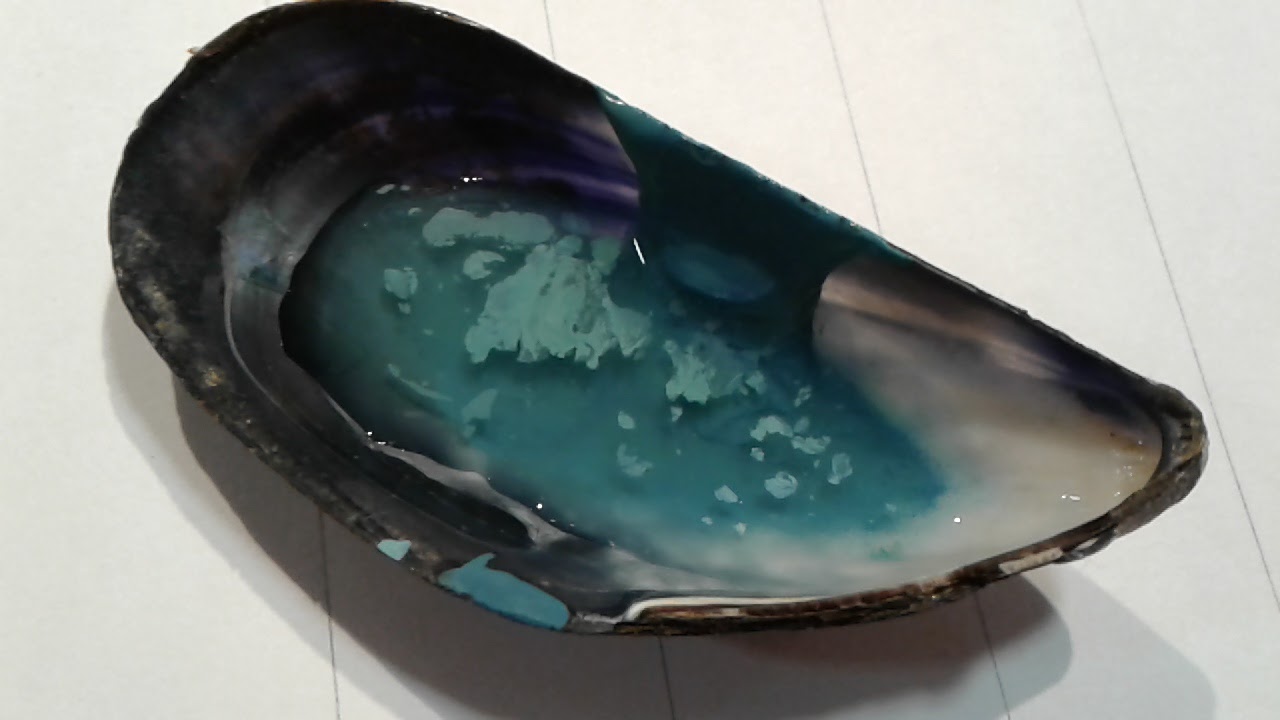
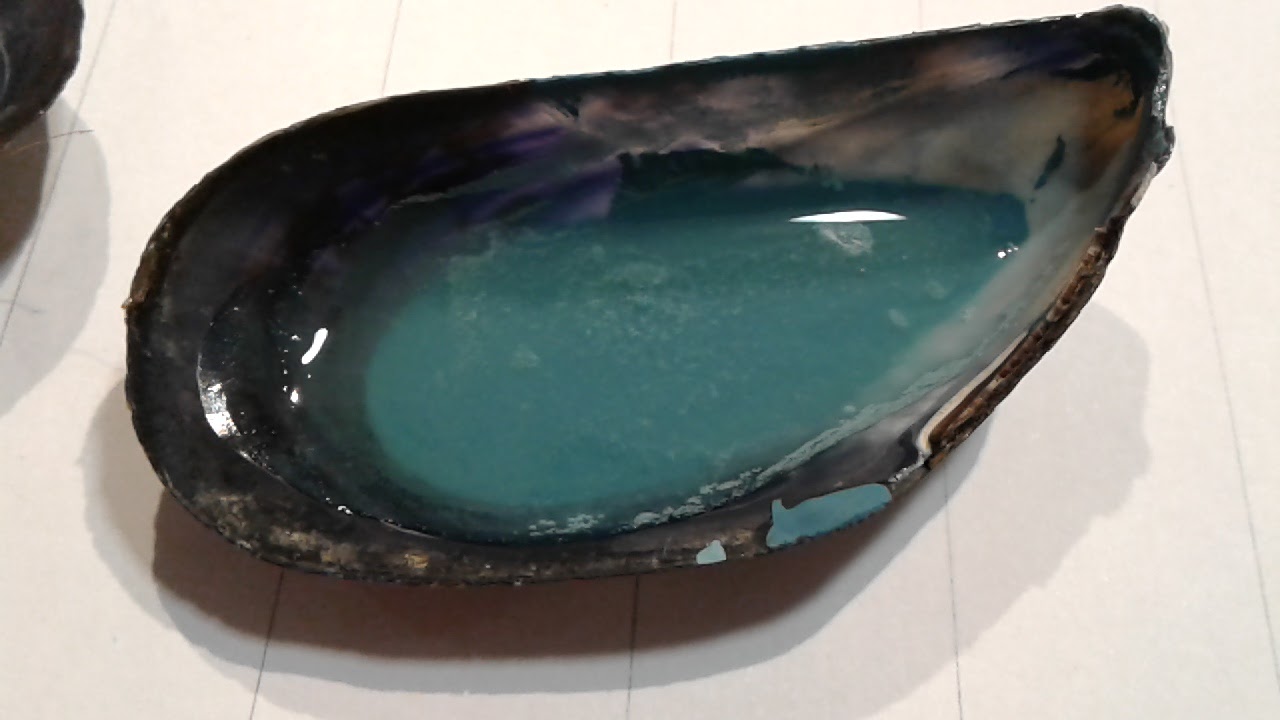
- Pour off into another shell the water at the top with smaller dispersed particles
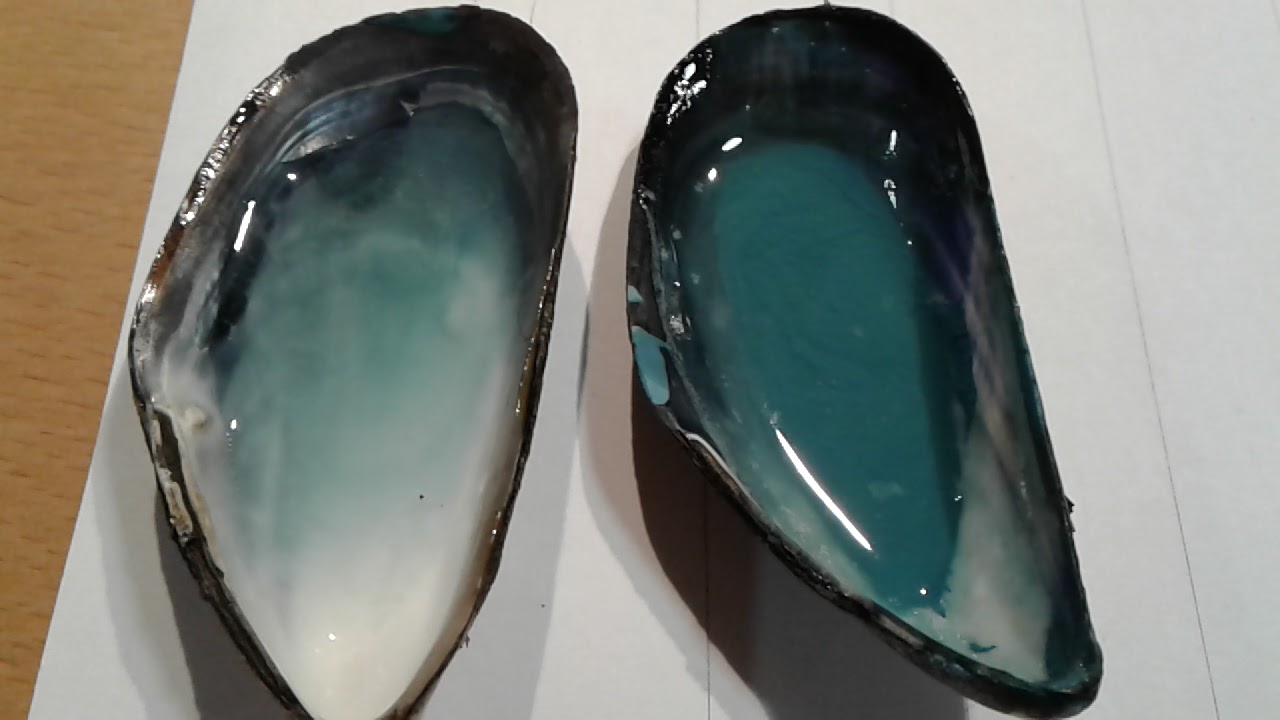
What is left in the first mussel shell is larger particles
Repeat adding water and pouring off until the azurite remaining is midnight blue

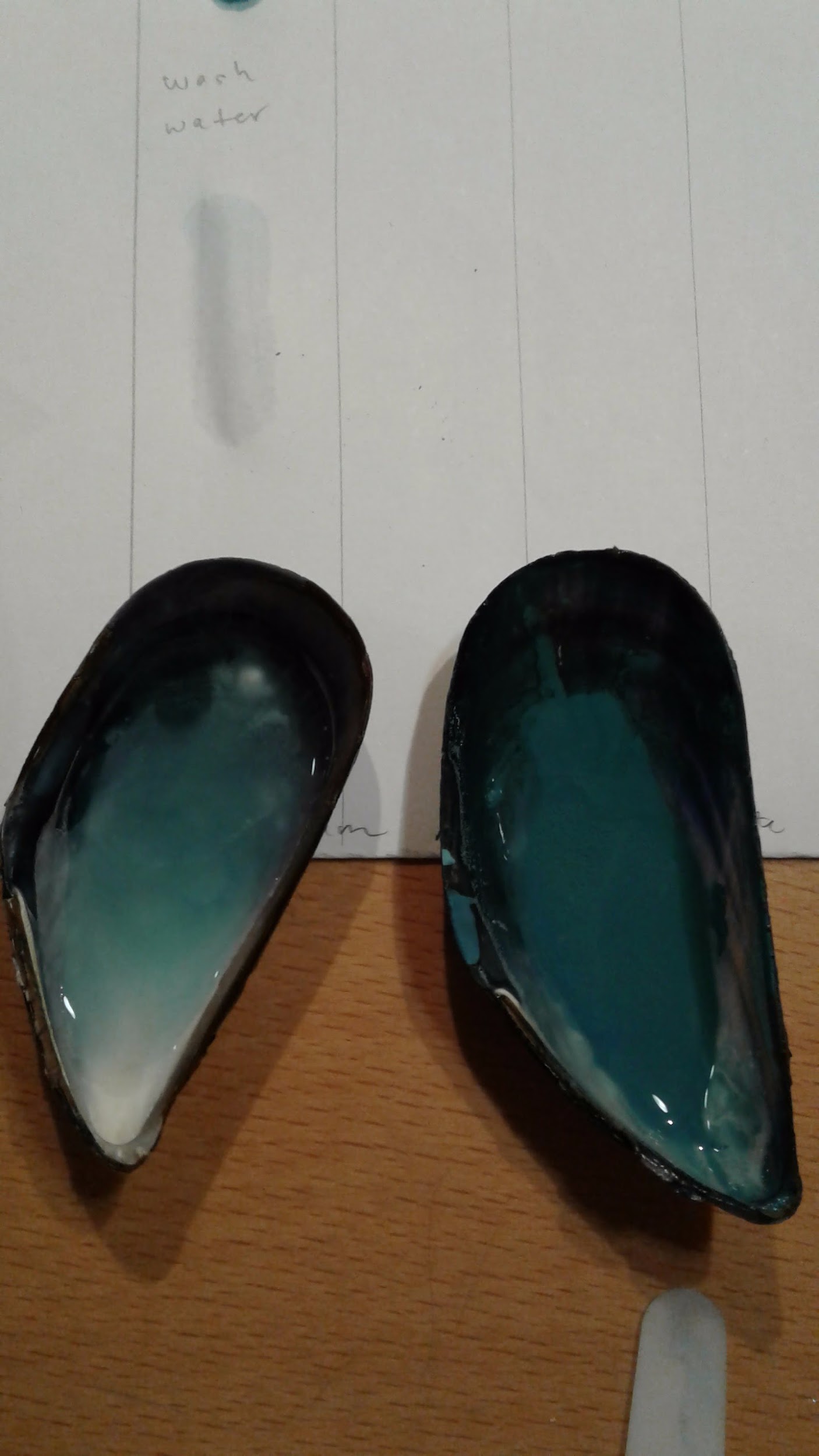
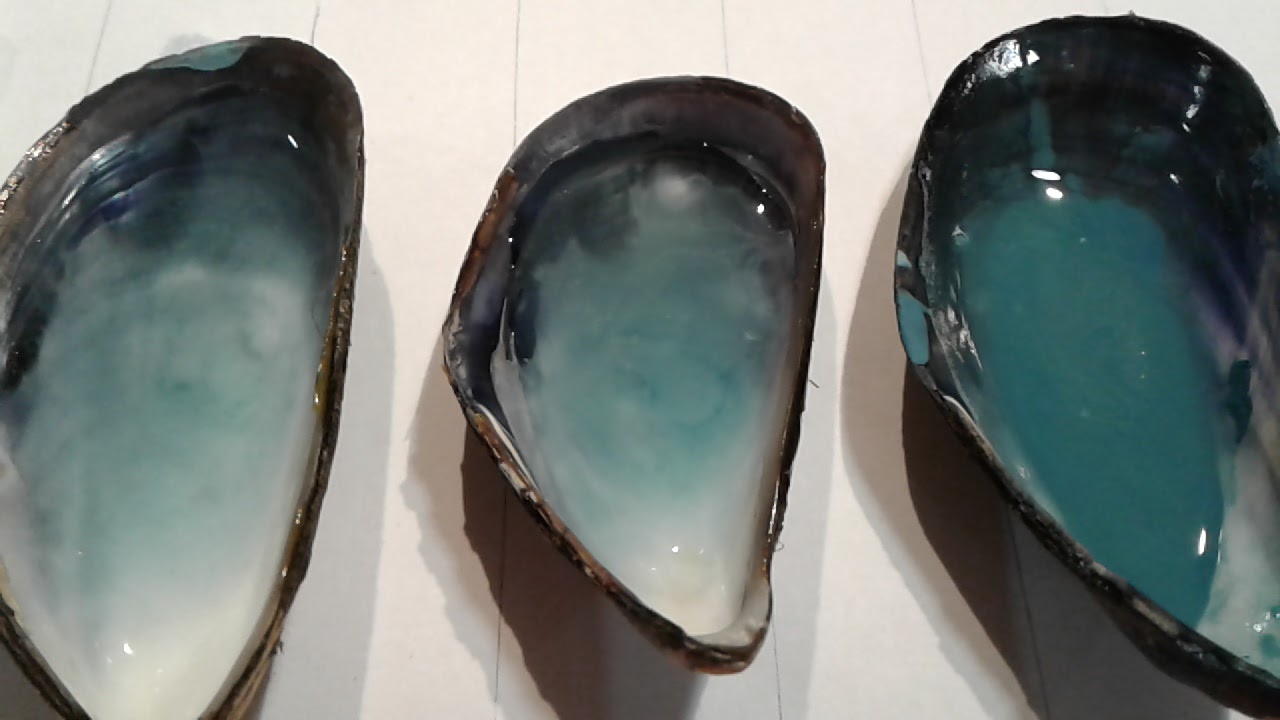
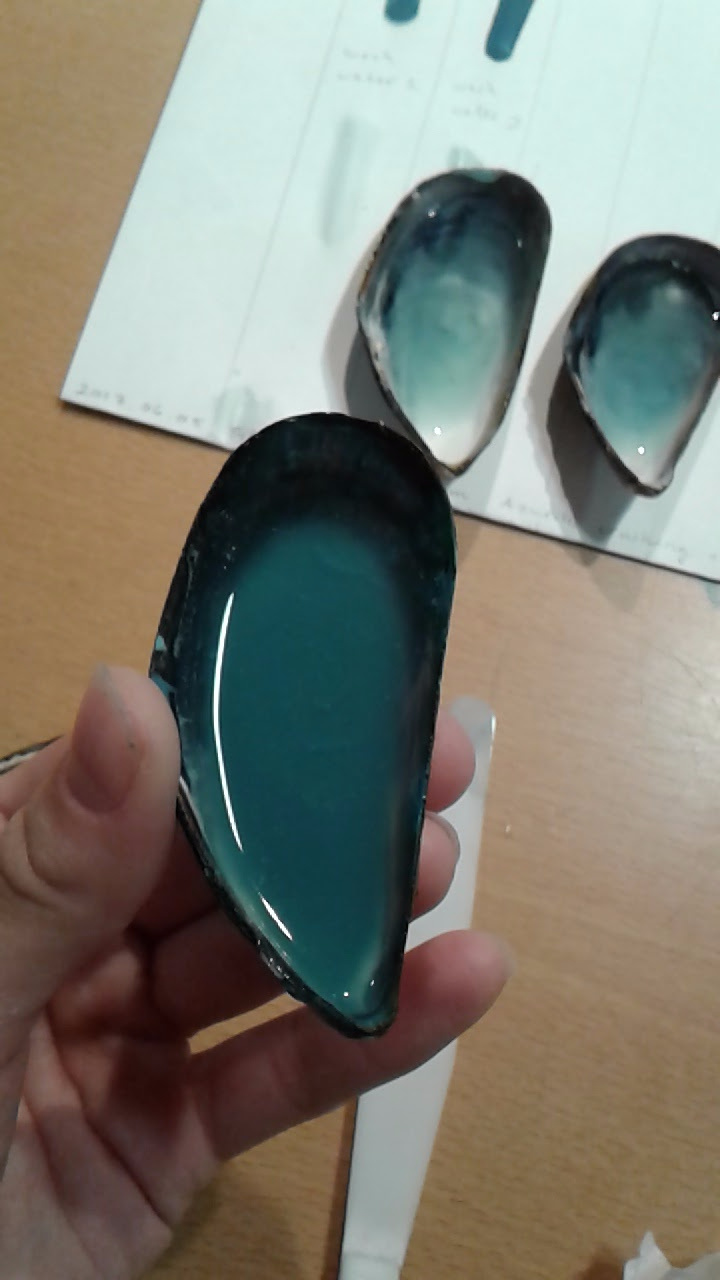

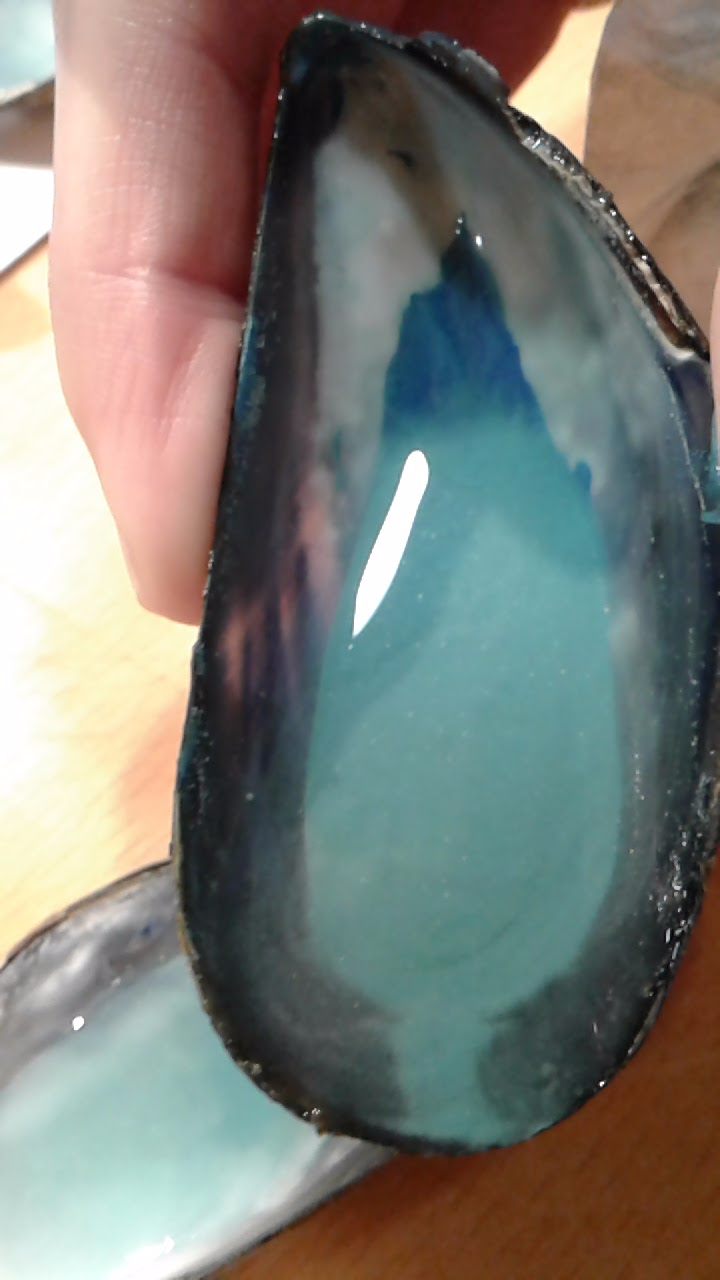


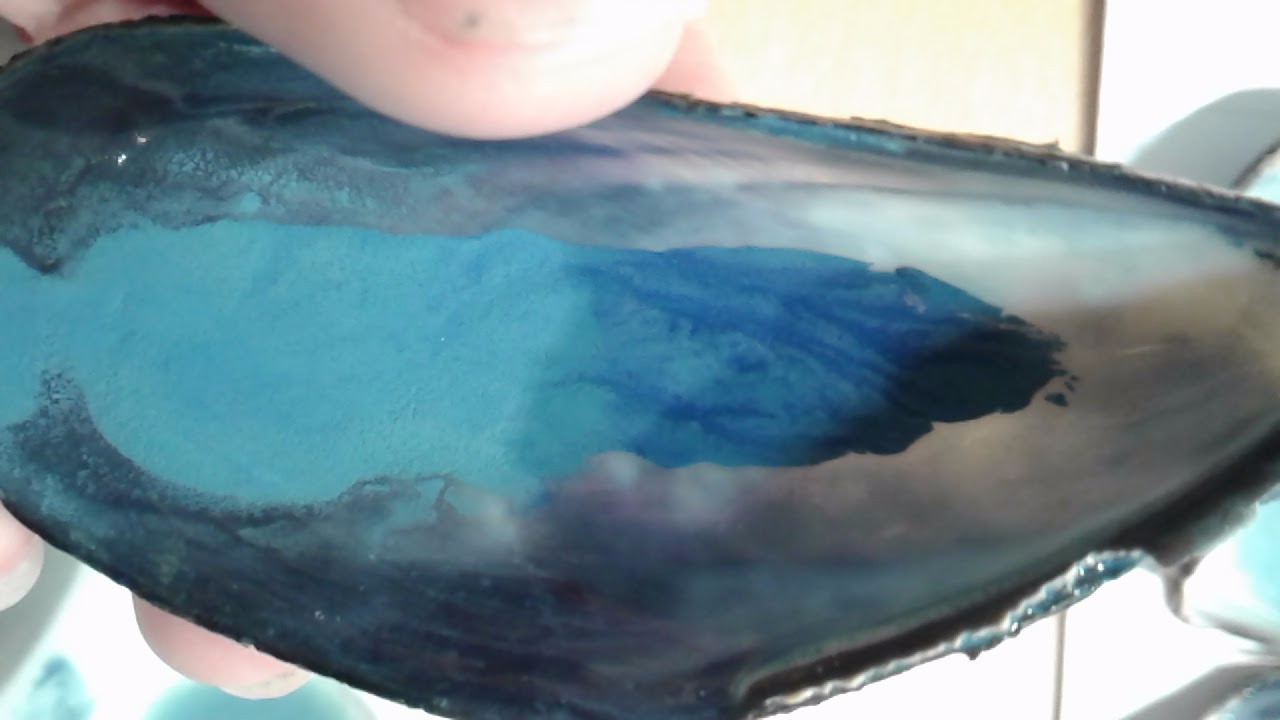
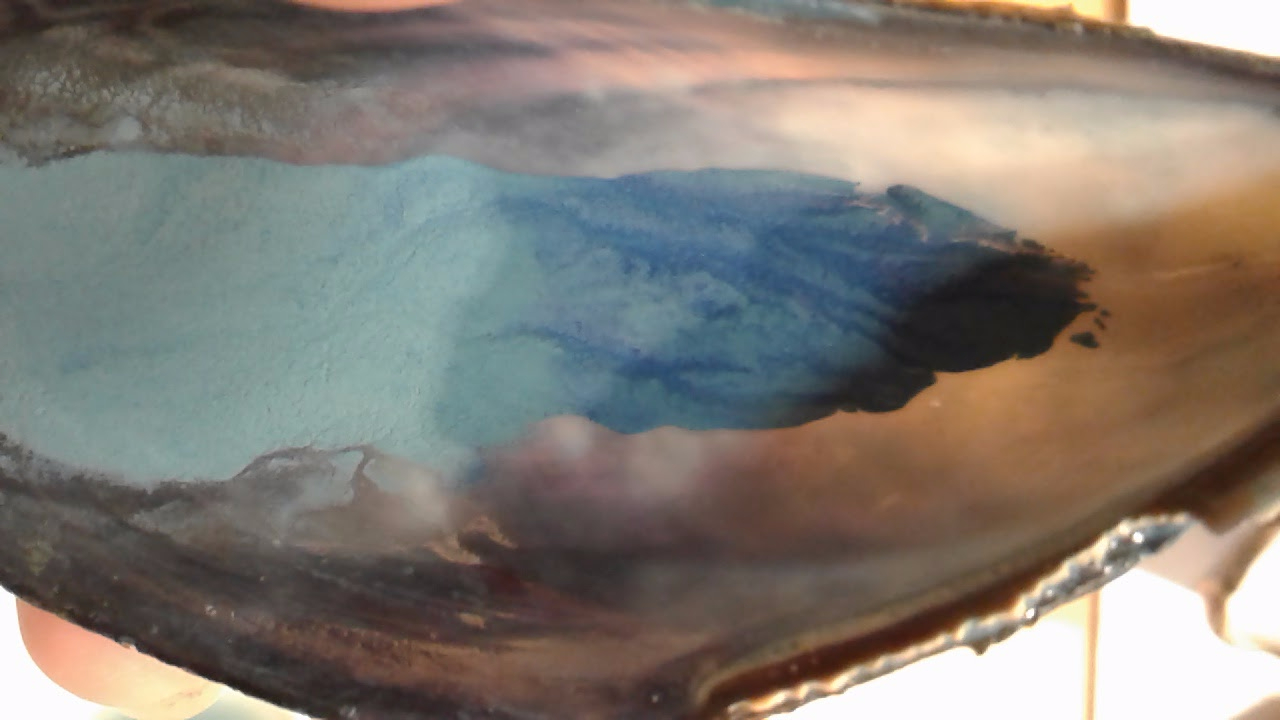
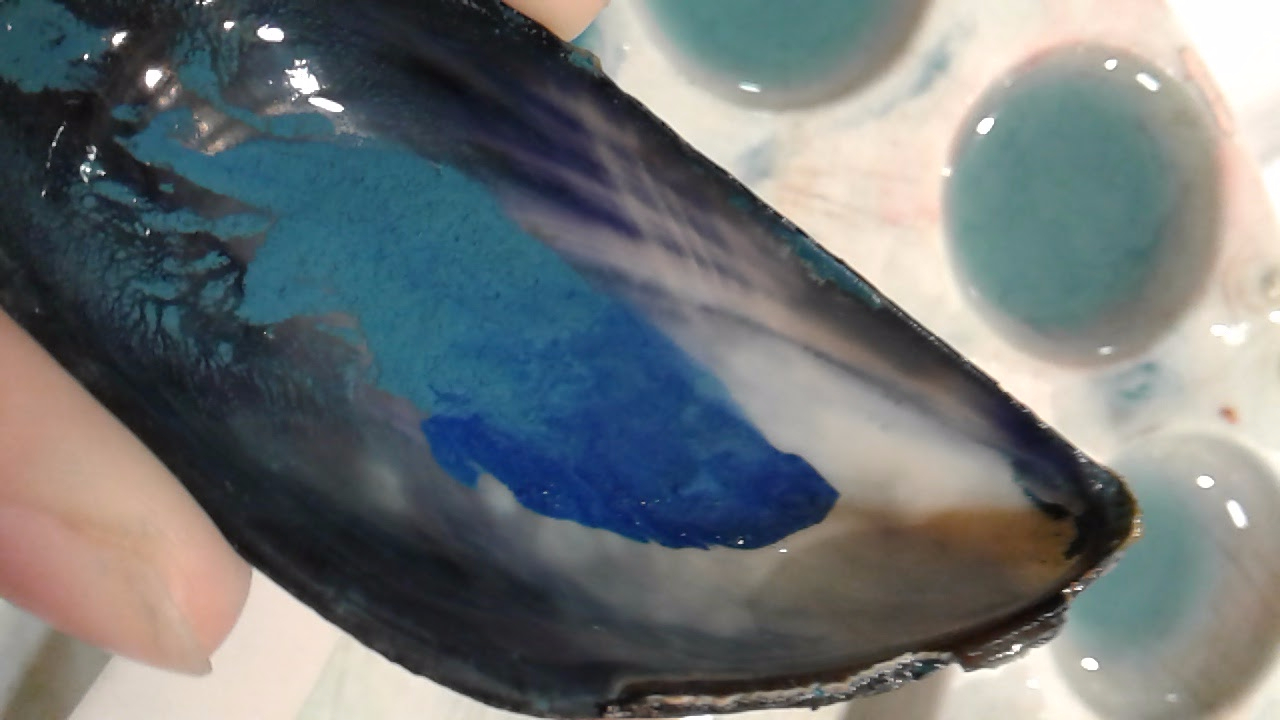

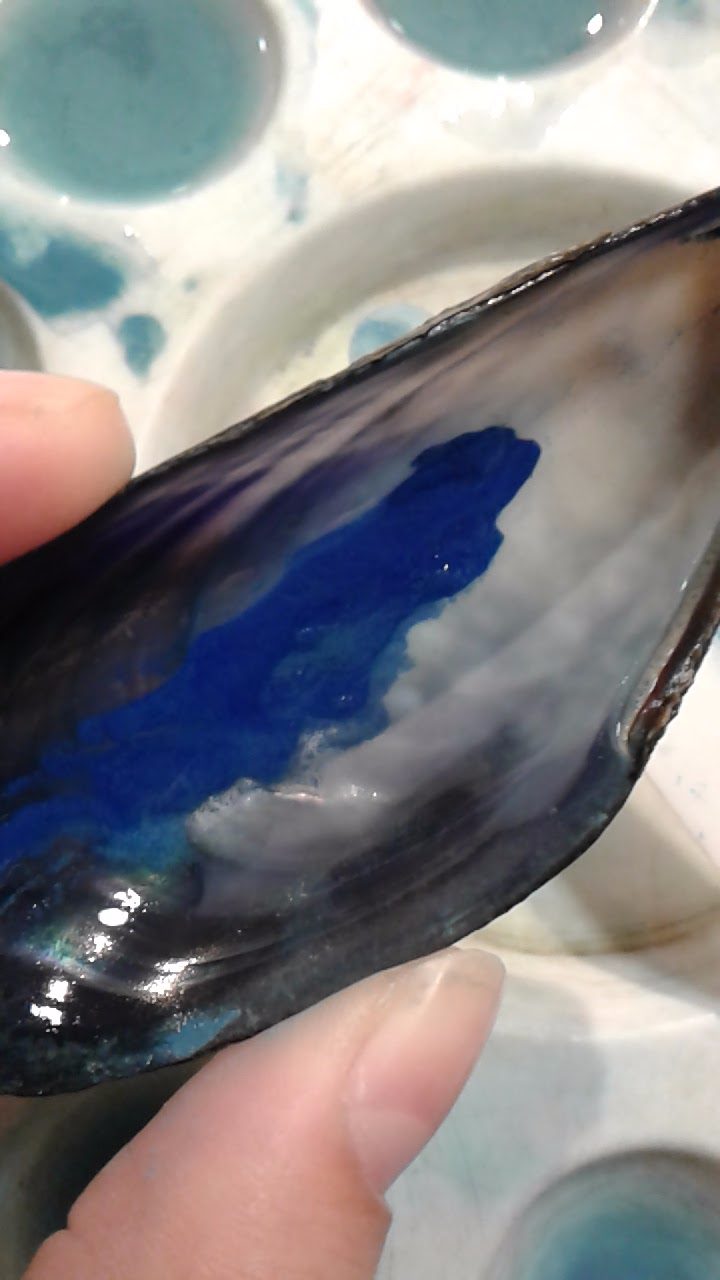
- Because we are short on time:
- To paint out, add a small amount of gum arabic directly to azurite in shell that is still quite wet

Can add more water as needed
NJR: added gum arabic, painted out once, then poured off again and painted out → better color and consistency
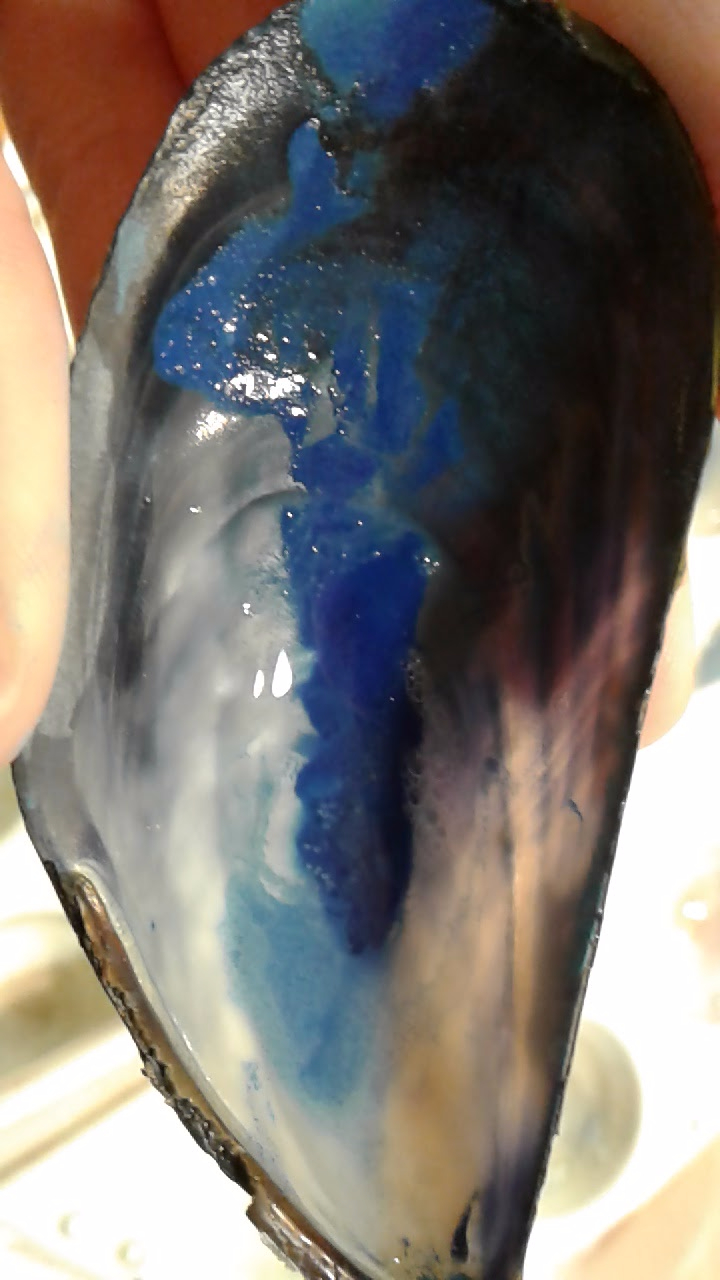
Wash water that was poured off successively:
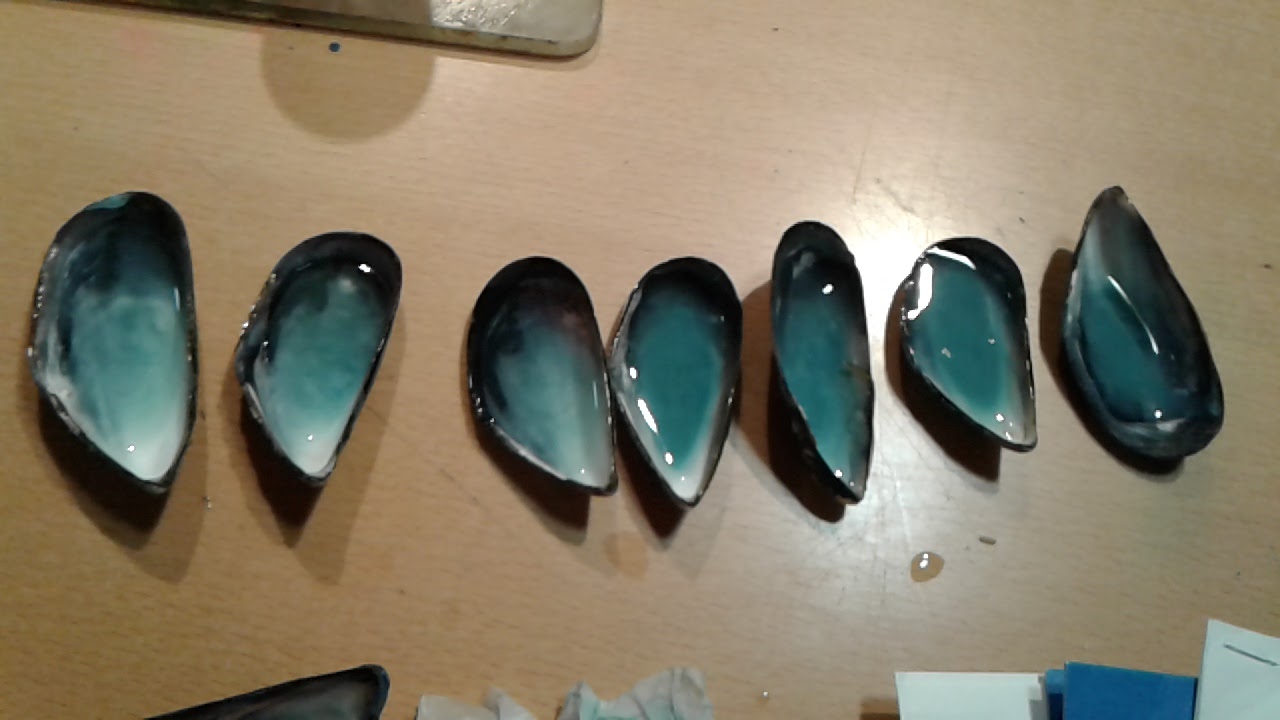
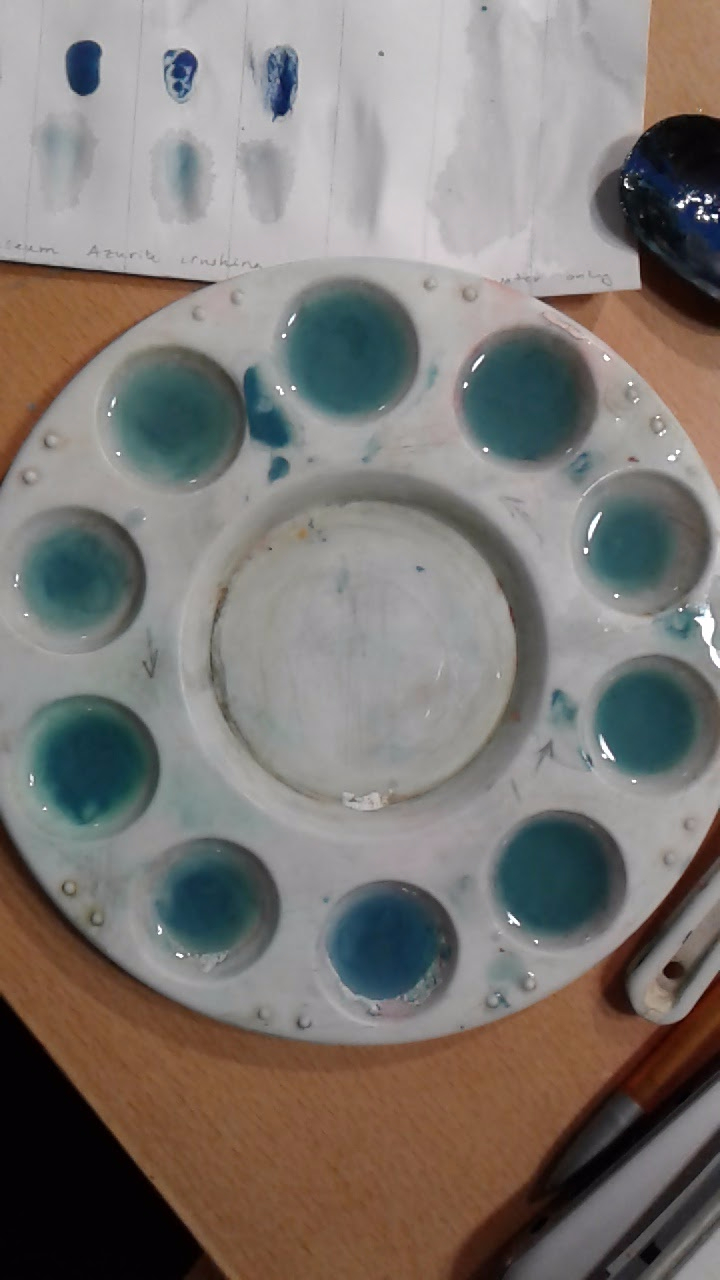
Color of the azurite and the wash water after each wash:
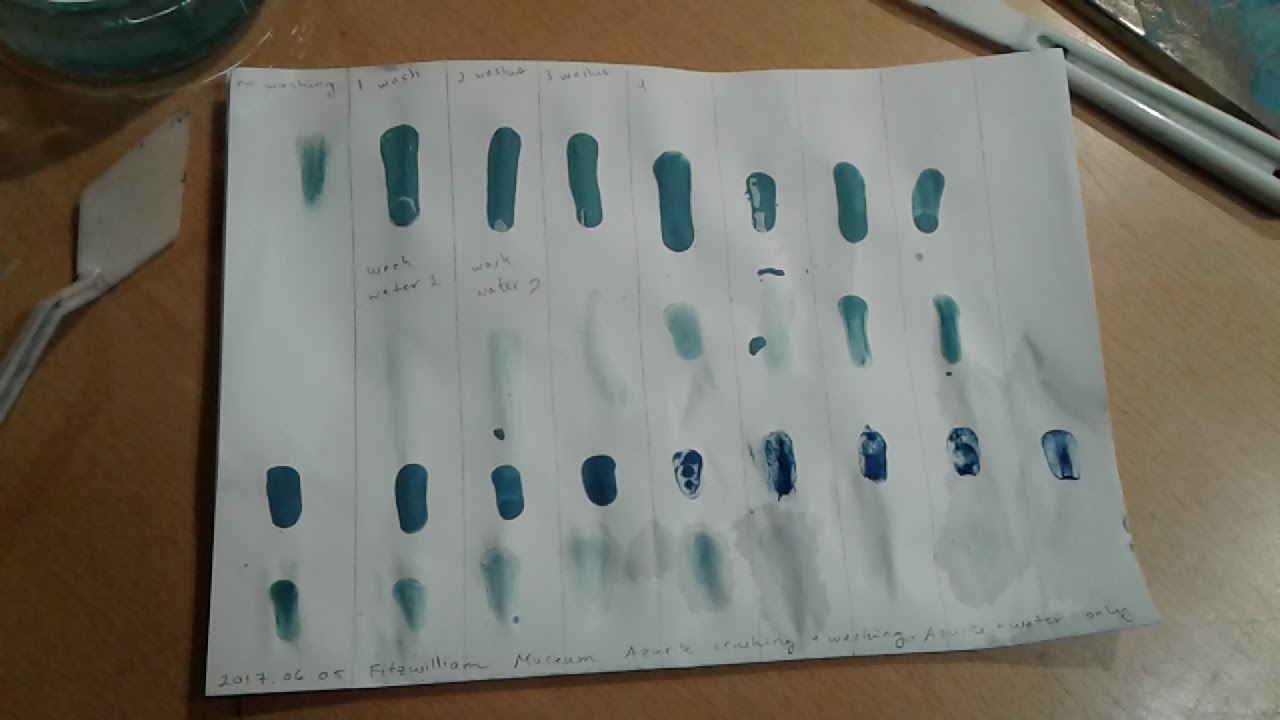
Painted out with gum arabic:
